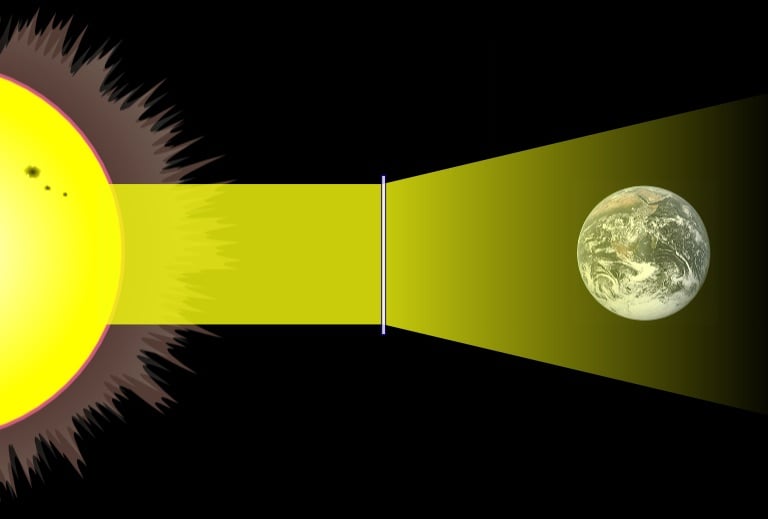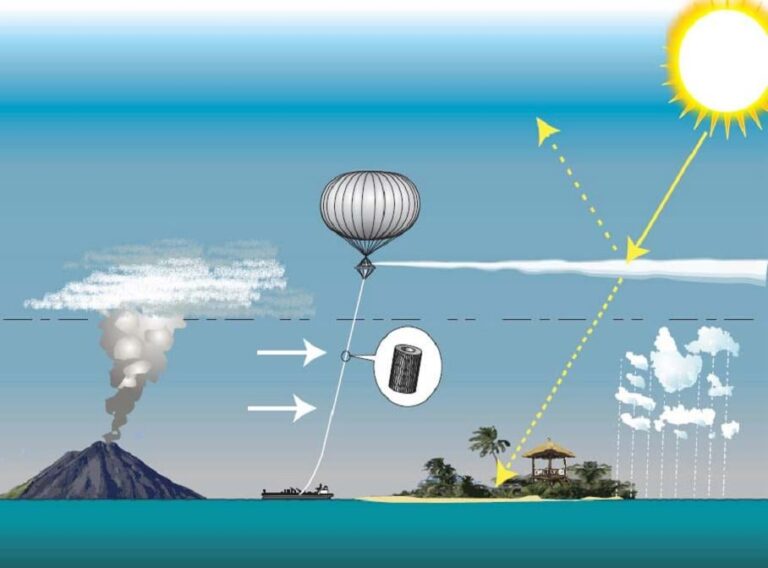If global warming continues at its current rate, Earth’s average temperature is likely to rise 2.7 degrees Fahrenheit (1.5 degrees Celsius) above pre-industrial levels between 2030 and 2052. Experts believe crossing this threshold will have significant consequences for people and the planet, causing irreversible ecosystem damage and increasing the risk of extreme weather.
Curbing planet-warming emissions is the most direct solution to this problem, but efforts to do so are falling short of critical reduction targets. To avoid 2.7 degrees F of warming, the global community needs to cut 42% of its emissions by 2030 and 57% by 2035, according to the 2024 United Nations Emissions Gap Report. Achieving this will require “dramatically stronger ambition and action” from nations across the globe, the report states.
In light of these grim circumstances, some scientists argue against putting all our eggs in the emissions-reduction basket. Mitigating the most severe impacts of climate change, they say, will require audacious efforts to artificially cool the planet.
Researchers are investigating a number of geoengineering strategies that could theoretically achieve this, though they remain highly controversial and largely untested. Here are some of the most outlandish proposals scientists have made thus far.
1. Mimicking the effects of volcanic eruptions
A diagram of the SPICE project proposal, one approach to stratospheric aerosol injection © Hughhunt via Wikimedia Commons
When Mount Pinatubo—a stratovolcano in the Philippines—erupted in 1991, it produced the largest sulfur dioxide eruption cloud ever measured. This massive injection of gas and ash into the stratosphere caused Earth to temporarily reflect more sunlight back into space, lowering the global temperature by about 0.9 degrees F (0.5 degrees C) over the ensuing year.
Scientists have proposed artificially mimicking this effect through stratospheric aerosol injections (SAIs). This technique would involve releasing large quantities of tiny, sunlight-reflecting sulfur particles into the second layer of the atmosphere, located above the troposphere. In theory, these particles would act as a reflective barrier against sunlight, lowering Earth’s temperature.
Though none have ever been tested at scale, researchers have come up with several ways to achieve this, from shooting particles out of artillery guns to releasing them from aircraft. Others warn that SAI could have serious unintended consequences.
In one recent study, the authors argue that this geoengineering technique could disrupt weather patterns, jet streams, and global air circulation. What’s more, it would be extremely difficult to pull off effectively, they say.
2. Making clouds more reflective
Like SAI, marine cloud brightening (MCB) would involve injecting aerosols into the atmosphere. But instead of targeting the stratosphere, this geoengineering technique would release salt spray into low-lying clouds above the ocean.
In theory, MCB could increase the clouds’ reflectivity and reduce the amount of heat absorbed by the water below. Unlike SAI, researchers have done some small-scale MCB experiments, but only under very strict regulations. Such efforts are still many years away from reaching at-scale deployment, however.
As such, the potential consequences of MCB remain poorly understood. Studies suggest it could lead to depletions or increases in the ozone layer—depending on where it’s being deployed—as well as unexpected atmospheric chain reactions. What’s more, this technique could become ineffective as the planet warms, perhaps even contributing to heat stress.
3. Creating super-photosynthesizers
 Proponents of photosynthesis enhancement argue it could cool the planet while also boosting crop yield. © ekrem sahin via Shutterstock
Proponents of photosynthesis enhancement argue it could cool the planet while also boosting crop yield. © ekrem sahin via Shutterstock
Plants are Earth’s first line of defense against climate change. Through photosynthesis, they absorb planet-warming carbon dioxide to create energy and biomass, effectively removing it from the atmosphere.
However, humanity’s carbon output is outpacing photosynthesis, allowing too much carbon to infiltrate the atmosphere. To overcome this, some scientists suggest genetically modifying plants and algae to perform photosynthesis more efficiently, thus allowing them to absorb and metabolize more carbon dioxide.
Proponents of enhanced photosynthesis argue that it could also be beneficial to global food security. As the world population grows, increasing photosynthesis would be an effective way to boost crop yields for food and fuel in a warming, carbon-abundant world.
That said, genetically modifying plant life comes with many unknowns. Creating new organisms and integrating them into the ecosystem—even in controlled agricultural environments—could result in unexpected side effects.
4. Growing and sinking massive amounts of seaweed
Geoengineering through seaweed farming also capitalizes on the carbon-absorbing powers of photosynthesis. This approach involves the industrial cultivation of seaweed to remove carbon dioxide from seawater.
The seaweed is then sunk down to the ocean floor, where its carbon will theoretically remain sequestered for hundreds of years. Alternatively, the seaweed biomass may be used to create products such as biofuels, fertilizers, and animal feed.
It may sound like an effective solution, but critics argue that seaweed farms would need to scale at an unrealistic pace to make a meaningful difference in global temperatures. What’s more, research suggests that seaweed may actually serve as a carbon source rather than a carbon sink, feeding marine organisms that produce carbon dioxide.
5. Giant space mirrors or sunshades
 A giant sunshield or mirror deployed in space could theoretically block or reduce the amount of sunlight reaching Earth. © Mikael Häggström via Wikimedia Commons
A giant sunshield or mirror deployed in space could theoretically block or reduce the amount of sunlight reaching Earth. © Mikael Häggström via Wikimedia Commons
This geoengineering tactic is truly out of this world. It’s a form of solar radiation management like SAI and MCB, but instead of spraying reflective particles, this approach would launch ginormous mirrors or sunshades into orbit.
It sounds like something straight out of science fiction. Indeed, we’re light-years away from deploying such a feat of engineering. These mirrors or sunshades would need to be roughly as big as a mid-sized country and could cost quadrillions of dollars to build.
Despite clear technical and financial hurdles, several research groups are working to develop prototypes. Given the rapid pace of global warming, however, critics argue there’s no way they will bring their technologies to scale in time to prevent the worst effects of climate change.
6. Making Earth’s surface more reflective
If we can’t deploy huge mirrors in space, maybe we can turn Earth into one. Surface albedo modification aims to achieve this by brightening large swaths of the planet’s surface, increasing the amount of sunlight it reflects back into space.
SAM proposals include growing crops that reflect more light, clearing boreal forest in snow-covered areas, whitening mountaintops and roofs with white paint, and more—all with the common goal of increasing Earth’s albedo.
While some of these approaches are arguably more benign than others, the consequences of altering ecosystems in this way could outweigh the benefits. Because none of these techniques have been tested on large scales, it’s impossible to know exactly how effective—or damaging—they could be.
Images are for reference only.Images and contents gathered automatic from google or 3rd party sources.All rights on the images and contents are with their legal original owners.

